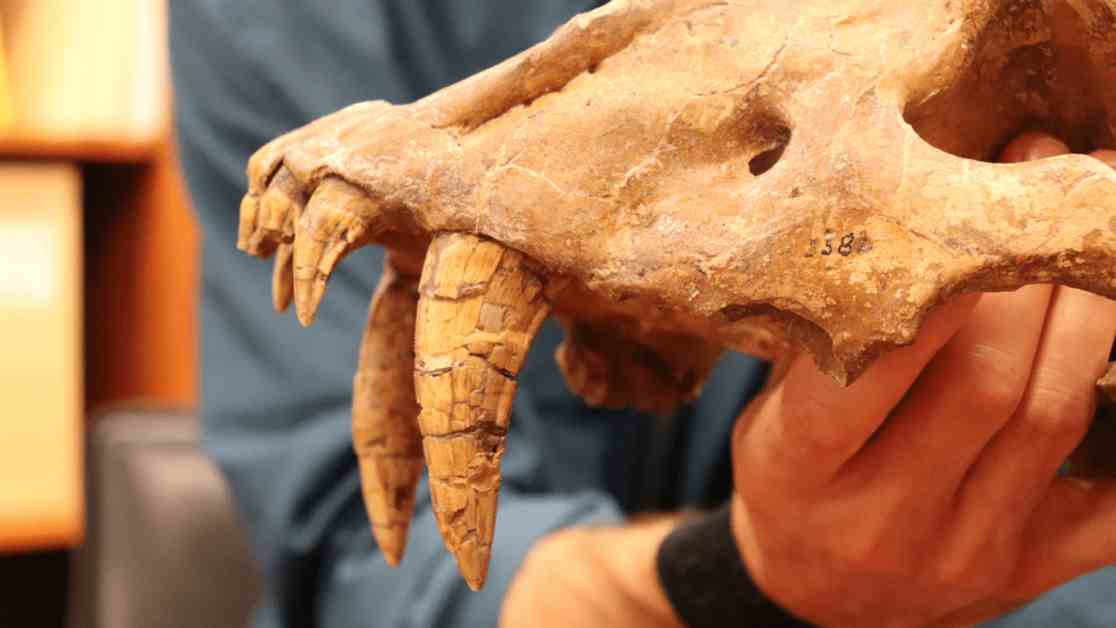Fossil Found on Texas Coast Reveals Extinct Saber-Toothed Cat
A groundbreaking discovery on the Texas coast has unveiled evidence of an extinct saber-toothed cat that roamed the Earth tens of thousands of years ago. The research, published in the May issue of The Anatomical Record, sheds light on the ecological landscape during the Late Pleistocene.
The fossil, initially discovered over 60 years ago on McFaddin Beach, was identified as a Homotherium, a genus of large cat about the size of a jaguar. Led by John Moretti, a doctoral student at the UT Jackson School of Geosciences, the team uncovered a hidden canine tooth that had not erupted from the jaw bone, allowing for the identification of the saber-toothed cat.
This finding marks the first evidence of the big cat roaming the now-submerged continental shelf that connected Texas and Florida. Scientists believe this area served as a Neotropical corridor for various animals traveling north from Mexico to Texas and Florida.
The research, part of a larger initiative on McFaddin Beach fossils, was funded by UT, Sam Houston State University, and North Carolina State University. Co-authors of the study include William Godwin, Deanna Flores, Christopher J. Bell, Adam Hartstone-Rose, and Patrick J. Lewis. The fossil was donated by U.S. Rep. Brian Babin, a former student of Russell Long, who initially discovered the fossil.
